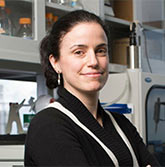- Our Story
- Publications & Resources
- Publications & Resources
- Publications
- IEEE Signal Processing Magazine
- IEEE Journal of Selected Topics in Signal Processing
- IEEE Signal Processing Letters
- IEEE Transactions on Computational Imaging
- IEEE Transactions on Image Processing
- IEEE Transactions on Information Forensics and Security
- IEEE Transactions on Multimedia
- IEEE Transactions on Signal and Information Processing over Networks
- IEEE Transactions on Signal Processing
- IEEE TCI
- IEEE TSIPN
- Data & Challenges
- Submit Manuscript
- Guidelines
- Information for Authors
- Special Issue Deadlines
- Overview Articles
- Top Accessed Articles
- SPS Newsletter
- SigPort
- SPS Resource Center
- Publications FAQ
- Blog
- News
- Dataset Papers
- Conferences & Events
- Community & Involvement
- Professional Development
- For Volunteers
- Information for Authors-OJSP
-
Home
Conferences & Workshops13 September 2027 to 16 September 2027Conferences & Workshops29 October 2025 to 31 October 2025Conferences Events IEEE Signal Processing Magazine IEEE SPL Article IEEE TIFS Article IEEE TMM Article IEEE TSP Article Jobs in Signal Processing Lectures Machine Learning Seasonal Schools Signal Processing News SPM Article SPS Distinguished Lectures SPS Newsletter Article SPS Webinar SPS Webinars SPS Webinar Series Webinar webinars
-
Our Story
What is Signal Processing?

The technology we use, and even rely on, in our everyday lives –computers, radios, video, cell phones – is enabled by signal processing. Learn More » -
Publications & Resources
-
SPS Resources
- Signal Processing Magazine The premier publication of the society.
- SPS Newsletter Monthly updates in Signal Processing
- SPS Resource Center Online library of tutorials, lectures, and presentations.
- SigPort Online repository for reports, papers, and more.
- SPS Feed The latest news, events, and more from the world of Signal Processing.
-
SPS Resources
-
Conferences & Events
-
Community & Involvement
-
Membership
- Join SPS The IEEE Signal Processing Magazine, Conference, Discounts, Awards, Collaborations, and more!
- Chapter Locator Find your local chapter and connect with fellow industry professionals, academics and students
- Women in Signal Processing Networking and engagement opportunities for women across signal processing disciplines
- Students Scholarships, conference discounts, travel grants, SP Cup, VIP Cup, 5-MICC
- Young Professionals Career development opportunities, networking
- Get Involved
-
Technical Committees
- Applied Signal Processing Systems
- Audio and Acoustic Signal Processing
- Bio Imaging and Signal Processing
- Computational Imaging
- Image Video and Multidimensional Signal Processing
- Information Forensics and Security
- Machine Learning for Signal Processing
- Multimedia Signal Processing
- Sensor Array and Multichannel
- Signal Processing for Communication and Networking
- Signal Processing Theory and Methods
- Speech and Language Processing
- Technical Working Groups
- More TC Resources
-
Membership
-
Professional Development
-
Professional Development
- Signal Processing Mentorship Academy (SigMA) Program
- Micro Mentoring Experience Program (MiME)
- Distinguished Lecturer Program
- Distinguished Lecturers
- Distinguished Lecturer Nominations
- Past Lecturers
- Distinguished Industry Speaker Program
- Distinguished Industry Speakers
- Distinguished Industry Speaker Nominations
- Industry Resources
- IEEE Training Materials
- Jobs in Signal Processing: IEEE Job Site
-
Career Resources
- SPS Education Program Educational content in signal processing and related fields.
- Distinguished Lecturer Program Chapters have access to educators and authors in the fields of Signal Processing
- Job Opportunities Signal Processing and Technical Committee specific job opportunities
- Job Submission Form Employers may submit opportunities in the area of Signal Processing.
-
Professional Development
-
For Volunteers
-
For Board & Committee Members
- Board Agenda/Minutes* Agendas, minutes and supporting documentation for Board and Committee Members
- SPS Directory* Directory of volunteers, society and division directory for Board and Committee Members.
- Membership Development Reports* Insight into the Society’s month-over-month and year-over-year growths and declines for Board and Committee Members
-
For Board & Committee Members
Popular Pages
Today's:
- Information for Authors
- (ASRU 2025) 2025 IEEE Automatic Speech Recognition and Understanding Workshop
- IEEE Transactions on Information Forensics and Security
- (ISBI 2026) 2026 IEEE 23rd International Symposium on Biomedical Imaging
- IEEE Signal Processing Letters
- IEEE Transactions on Multimedia
- IEEE Transactions on Signal Processing
- IEEE Transactions on Image Processing
- Submit a Manuscript
- IEEE Journal of Selected Topics in Signal Processing
- Award Recipients
- Unified EDICS
- Guidelines
- About Transactions on Information Forensics and Security
- Publications & Resources
All time:
- Information for Authors
- Submit a Manuscript
- IEEE Transactions on Image Processing
- IEEE Transactions on Information Forensics and Security
- IEEE Transactions on Multimedia
- IEEE Transactions on Audio, Speech and Language Processing
- IEEE Signal Processing Letters
- IEEE Transactions on Signal Processing
- Conferences & Events
- IEEE Journal of Selected Topics in Signal Processing
- Information for Authors-SPL
- Conference Call for Papers
- Signal Processing 101
- IEEE Signal Processing Magazine
- Guidelines
Last viewed:
- New Society Editors-in-Chief Named for 2024
- Information for Authors
- (ICME 2026) 2026 IEEE International Conference on Multimedia and Expo
- Call for proposals: 2027 IEEE Conference on Artificial Intelligence (CAI)
- Information for Authors-SPM
- Submit a Manuscript
- Information for Authors-SPL
- Video & Image Processing Cup
- IEEE Transactions on Image Processing
- IEEE Journal of Selected Topics in Signal Processing
- (ISBI 2026) 2026 IEEE 23rd International Symposium on Biomedical Imaging
- Distinguished Lecturers
- (ICME 2025) 2025 IEEE International Conference on Multimedia and Expo
- Past Lecturers
- (WIFS 2024) 2024 IEEE International Workshop on Information Forensics and Security
Series to Highlight Women in Signal Processing: Interview with Prof. Elisa E. Konofagou
You are here
Newsletter Menu
Newsletter Categories
Top Reasons to Join SPS Today!
1. IEEE Signal Processing Magazine
2. Signal Processing Digital Library*
3. Inside Signal Processing Newsletter
4. SPS Resource Center
5. Career advancement & recognition
6. Discounts on conferences and publications
7. Professional networking
8. Communities for students, young professionals, and women
9. Volunteer opportunities
10. Coming soon! PDH/CEU credits
Click here to learn more.
News and Resources for Members of the IEEE Signal Processing Society
Series to Highlight Women in Signal Processing: Interview with Prof. Elisa E. Konofagou
 Elisa E. Konofagou is the Robert and Margaret Hariri Professor of Biomedical Engineering and Professor Radiology as well as Director of the Ultrasound and Elasticity Imaging Laboratory at Columbia. Her main interests are in the development of novel elasticity imaging techniques and therapeutic ultrasound methods. Elisa is an Elected Member of the National Academy of Medicine, Elected Fellow of the Institute of Electrical and Electronic Engineers (IEEE), the American Institute of Biological and Medical Engineering (AIMBE) and of the Acoustical Society of America. She has co-authored over 260 published articles in the aforementioned fields.
Elisa E. Konofagou is the Robert and Margaret Hariri Professor of Biomedical Engineering and Professor Radiology as well as Director of the Ultrasound and Elasticity Imaging Laboratory at Columbia. Her main interests are in the development of novel elasticity imaging techniques and therapeutic ultrasound methods. Elisa is an Elected Member of the National Academy of Medicine, Elected Fellow of the Institute of Electrical and Electronic Engineers (IEEE), the American Institute of Biological and Medical Engineering (AIMBE) and of the Acoustical Society of America. She has co-authored over 260 published articles in the aforementioned fields.
We approached Prof. Elisa Konofagou with a few questions to learn more:
1) What was the most important factor in your success?
Continuous support by my family. I think it is extremely important to have someone there (it doesn’t have to be a family member by the way, it can be a friend or mentor or anyone else who gets your talent and dedication) who lifts you up when life or your career or sometimes both throw wrenches in your path. Another important factor is mentors who you can guide you through your career and offer good advice about choices, decisions or overall paths. A mentor is anyone who is willing to listen to your needs or concerns and offer a helping hand or a good advice.
2) Failures are an inevitable part of everyone’s career journey, what is the most important lesson you have learned during your career when dealing with failures?
To never give up. And I am very keenly aware that this is much easier said than done, especially by someone who is not necessarily in your position or your conundrum. But in the end you learn that failures lead you to who you are, who is hopefully a person who perseveres through struggles. With my students and in workshops, I sometimes jokingly say if nobody believes you but you know you have discovered or invented something new, trust in your eyes and patent it. Typically, we all are guilty of this initial negative reaction: we are naysayers when we first see something but then we become the biggest fans when we see it work over and over again. The difference is that we are sometimes the only person in the world who sees something working for the first time and if we don’t believe it or doubt ourselves too much, someone else will claim it.
3) Please share your work of societal impact with us.
I really believe in passing the scientific research bug to the new generations as well as developing technology that is accessible to the majority. I call ultrasound the soccer of imaging because you typically use a very portable system, or even pocketable these days, to image in the clinic. These days, energy and carbon neutrality are so important and ultrasound is by far the most sustainable of modalities. Ultrasound can be simply be powered by an iPhone battery.
4) What were the main changes in your field during the last 25-30 years?
There were several. The main one was miniaturizing the ultrasound scanner to a smart phone use as I mentioned earlier. This happened with very smart hardware engineering. It is amazing to think that ultrasound can be also embedded in smart watches and other accessories that anybody can use at home, on the run or in the clinic foe everyday use one day. The other aspect is functional imaging instead of only anatomical. The main advantage of ultrasound is its sound speed which was not sufficiently harnessed except in Doppler flow previously. Now, we know that thousands images per second are essential in getting rapid cardiac events such as electrical stimulation or visualize small blood vessels in the brain 10 times below the resolution limit. One more breakthrough in the last 30 years is in ultrasound therapeutics that has now crossed to the clinic. Therapeutic ultrasound is a much older technology than ultrasound imaging but took a lot longer to translate because of the lack of monitoring techniques. Now, it is routinely used for ablation of essential tremors in the brain, prostate cancer and palliative treatment of bone metastases.
5) During these COVID times, the teaching and learning has become online for some time now. What do you think are some of the challenges being faced in carrying out quality teaching as well as quality research? Do you have any suggestions for students and faculty?
These have been very hard times for both teaching and learning, for both students and professors. Last year, I taught a whole course with never meeting the students in person which was previously unheard of. It is very hard for all of us to be focused using a screen for extended periods of time. Typically, fatigue sets in and I have found that only 30% gets conveyed virtually compared to in person. The students get increasingly disconnected and frustrated with the fact that simple concepts are simply harder to grasp and fully understand virtually. The current policy of in person and quarantining when found positive is much more reasonable and I saw a big difference this past semester when we were in a classroom hashing out concepts and important principles. So, my recommendation is make the effort to get back to the habit of meeting the students in person, it makes such a huge difference in their training and overall learning.
To learn more about Prof. Elisa Konofagou, please visit her webpage.
Open Calls
Education & Resources
Society News
- Joint IEEE SPS and EURASIP Summer School on Defining 6G: Theory, Applications, and Enabling Technologies
- Congratulations to the 2022 SPS Certified Chapters
- Job Opportunities in Signal Processing
- Call for Editor-in-Chief Nominations: IEEE Transactions on Wireless Communications
- Nominate a Colleague! Nominations Open for 2022 SPS Awards
Technical Committee News
SPS Social Media
- IEEE SPS Facebook Page https://www.facebook.com/ieeeSPS
- IEEE SPS X Page https://x.com/IEEEsps
- IEEE SPS Instagram Page https://www.instagram.com/ieeesps/?hl=en
- IEEE SPS LinkedIn Page https://www.linkedin.com/company/ieeesps/
- IEEE SPS YouTube Channel https://www.youtube.com/ieeeSPS
Home | Sitemap | Contact | Accessibility | Nondiscrimination Policy | IEEE Ethics Reporting | IEEE Privacy Policy | Terms | Feedback
© Copyright 2025 IEEE - All rights reserved. Use of this website signifies your agreement to the IEEE Terms and Conditions.
A public charity, IEEE is the world's largest technical professional organization dedicated to advancing technology for the benefit of humanity.









